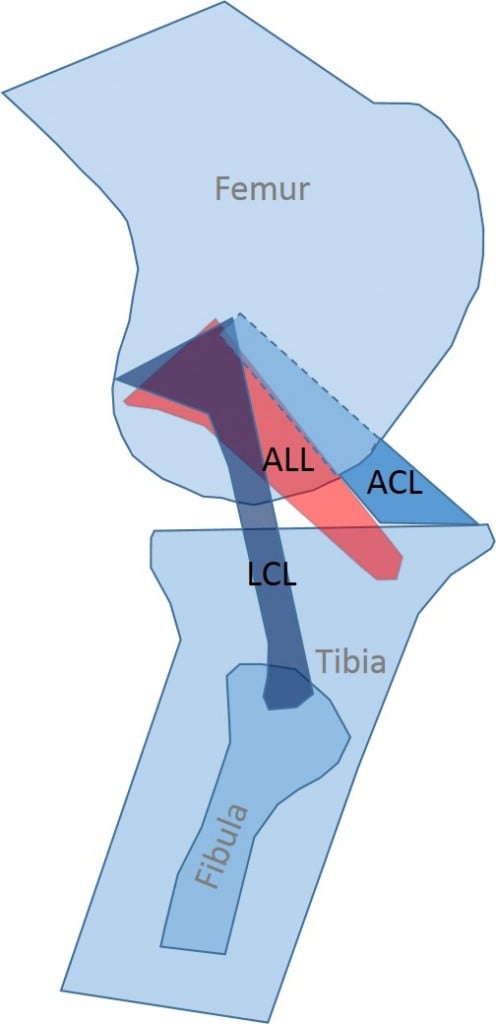Houston We Have a New Ligament: Does the Newly Discovered ALL Ligament Explain Why Some ACL Injuries Can’t Be Fixed?
The ALL Ligament!
No single phrase better defines the excitement of my childhood than, “Houston, the Eagle has landed…” Being a kid of the space race age, this was its apogee. I felt like a little kid this this week as I saw a new knee ligament discovered for the first time in more than 100 years, the A.L.L. ligament, which stands for Anterior Lateral Ligament. This new discovery could explain why some people continue to have unstable knees even after an ACL tear is surgically mended.
For years it’s puzzled surgeons why so many patients continue to have a positive “Pivot-shift” test showing rotational instability of the knee despite a new ACL being installed. In fact, this has lead some surgeons to begin using a double bundle ACL repair technique, thinking that by trying to recreate the two parts of the original ACL ligament, this rotational instability would be better. While it’s been our opinion that some of this continued knee instability after an ACL replacement is likely due to the fact that a surgical ACL isn’t anything like the original equipment, there may also be another cause. In 1879 a physician had described another ligament in the same orientation as the ACL on the outside/front of the knee. This ligament was in a good spot to constrain the tibia from rotating too much. Nobody thought much of this until some orthopedic researchers in Belgium recently began to investigate if this ligament was for real. Sure enough, it turns out to be located where our forebears said it would be and it may help stabilize the tibia in rotation.
I’ve taken the image of the cadaver dissection contained in their paper showing the ALL ligament (in red) and traced that to get to the diagram above. Notice that the new ligament is on the outside of the knee and is oriented in a similar direction as the ACL, meaning that it may also be injured when the ACL is torn. While the traditional surgeons look for a way to take out a stretched ALL ligament and replace it, we here at Regenexx will be looking for ways to help heal it by injecting your own platelets or stem cells, just like we currently routinely do with ACL ligament tears.
The upshot? We have a new knee ligament! Now we have to invent new ways to test for an injury to this ligament and to treat it without surgery.

If you have questions or comments about this blog post, please email us at [email protected]
NOTE: This blog post provides general information to help the reader better understand regenerative medicine, musculoskeletal health, and related subjects. All content provided in this blog, website, or any linked materials, including text, graphics, images, patient profiles, outcomes, and information, are not intended and should not be considered or used as a substitute for medical advice, diagnosis, or treatment. Please always consult with a professional and certified healthcare provider to discuss if a treatment is right for you.

